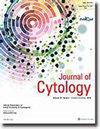Cytomorphological Categorization of Thyroid Lesions according to The Bethesda System for Reporting Thyroid Cytology and Correlation with their Histological Outcome: An Indian Oncology Centre Experience
IF 1
4区 医学
Q4 MEDICAL LABORATORY TECHNOLOGY
引用次数: 0
Abstract
Objective: The objective of this study was to report the experience of an Indian premiere tertiary care oncology center in reporting fine needle aspiration cytology of thyroid lesions according to the Bethesda system of reporting thyroid cytopathology (TBSRTC) given by National Cancer Institute (NCI). These were then correlated with their histopathological outcome, analyzing the level of specificity and sensitivity of the procedure. Material and Methods: Aspiration cytology of thyroid lesions, presented during a 5.5-year duration, was reported retrospectively and prospectively, according TBSRTC, and correlated with their histopathologic diagnosis. Results: A total of 431 patients were evaluated comprising 289 females and 142 males, with a median age of 52 years. Among the cytological categories 80 (18.6%) were non-diagnostic (ND), 131 (30.2%) benign, 45 (10.4%) follicular lesion of undetermined significance (FLUS), 27 (6.3%) follicular neoplasm, 33 (7.9%) suspicious for malignancy (SM), and 115 (26.7%) malignant. Histopathology reports were available in 142 of these cases. Final malignant diagnosis was reported in 11 of 14 ND (78.6%), 5 of 18 benign cases (27.7%); 9 of 17 FLUS (52.9%), 7 of 13 FLUS (53.89%), 19 of 20 SM (95%), and 58 of 60 malignant cases (96.7%). The procedure had sensitivity of 94.4%, specificity of 61.9%, positive predictive value of 90.3% and negative predictive value of 72.22%. Conclusion: TBSRTC provides uniform categorization of thyroid cytology, which also helps in further management. This valid system has helped to streamline the reporting terminologies as well as the clinical management.根据Bethesda系统报告甲状腺细胞学及其组织学结果的相关性,甲状腺病变的细胞形态学分类:印度肿瘤中心的经验
目的:本研究的目的是根据美国国立癌症研究所(NCI)提供的Bethesda甲状腺细胞病理报告系统(TBSRTC),报告印度一流三级护理肿瘤中心报告甲状腺病变细针抽吸细胞学的经验。然后将其与组织病理学结果相关联,分析手术的特异性和敏感性水平。材料和方法:根据TBSRTC,回顾性和前瞻性报告了在5.5年内出现的甲状腺病变的抽吸细胞学检查,并与其组织病理学诊断相关。结果:共有431名患者接受了评估,其中289名女性和142名男性,中位年龄为52岁。在细胞学分类中,80个(18.6%)为非诊断性(ND),131个(30.2%)为良性,45个(10.4%)为意义不明的卵泡病变(FLUS),27个(6.3%)为滤泡性肿瘤,33个(7.9%)为可疑恶性(SM),115个(26.7%)为恶性。其中142例有组织病理学报告。14例ND中有11例(78.6%)最终诊断为恶性,18例良性中有5例(27.7%);FLUS 17例中有9例(52.9%),FLUS 13例中有7例(53.89%),SM 20例中有19例(95%),恶性肿瘤60例中有58例(96.7%)。这一有效的系统有助于简化报告术语和临床管理。
本文章由计算机程序翻译,如有差异,请以英文原文为准。
求助全文
约1分钟内获得全文
求助全文
来源期刊

Journal of Cytology
MEDICAL LABORATORY TECHNOLOGY-
CiteScore
1.80
自引率
7.70%
发文量
34
审稿时长
46 weeks
期刊介绍:
The Journal of Cytology is the official Quarterly publication of the Indian Academy of Cytologists. It is in the 25th year of publication in the year 2008. The journal covers all aspects of diagnostic cytology, including fine needle aspiration cytology, gynecological and non-gynecological cytology. Articles on ancillary techniques, like cytochemistry, immunocytochemistry, electron microscopy, molecular cytopathology, as applied to cytological material are also welcome. The journal gives preference to clinically oriented studies over experimental and animal studies. The Journal would publish peer-reviewed original research papers, case reports, systematic reviews, meta-analysis, and debates.
 求助内容:
求助内容: 应助结果提醒方式:
应助结果提醒方式:


